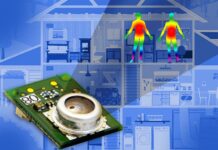It is never easy to switch away from the technology you have been using from decades in a day or two. But once you find something better, despite having issues initially, you will like the new change. When Linux came out initially, it was not a big success.
A Journalist from Veteran technology, Dan Gillmor said, I had to install Linux a number of times over a span of years and went back either to the Mac or Windows. The reason was there were many loop holes in this operating system. It didn’t have much of those applications to support what I need to do. It was complicated for everyday use. As the time passed by, it just got better and better and then it was time to finally switch to Linux in the year 2012.
Same is the case with the famous technology journalist Dan Gillmor who has been using Linux since 2012. He decided to switch away from all kinds of controlling services, software and tools with which he has grown familiar to over decades of computing.
Once you decide to switch to Linux permanently, the main question is which version because it comes in many flavours. The work of developers is to take the main code and then create different versions depending upon the taste, needs and computing styles.
According to Gillmor, there are definitely few difficulties in switching and many persistent thorns while using Linux, but there is also simplicity that he encountered with the flavour of Linux. His and mine experiences are quite similar, not much difference.
I faced some problems but not worse than the ones I experienced in years using the proprietary software. I can feel the freedom now after choosing Linux and leaving Windows and Mac. Life seems to be hassle free and simpler now.
When iPad Pro was introduced by Apple Inc. (NASDAQ:AAPL), Tim Cook called it the future of personal computing. But I don’t agree to it. In the iOS ecosystem, users are supposed to get all their software from Apple’s store and developers are supposed to sell them in the company store. This is what they call the idea of personal computing where nothing is done personally.
If we talk about Microsoft Corporations (NASDAQ:MSFT)’s latest Windows 10, which is considered to be a usability improvement over Windows 8, looks more like a spyware masquerading as an operating system. This is true that the upgrade from older versions widely installed is free of cost but it takes some unwanted liberties with users’ data and control, according to many people who analyzed its internal workings.









